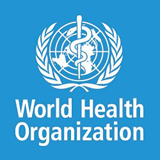
Third progress report on implementation of the Commission’s recommendations
Accountability for Women’s and Children’s Health:
July 2013 – May 2014
The 2014 Progress Report describes the evolution of the accountability work up to May 2014, and marks the end of the first phase of implementation.
The report summarizes progress made globally and by countries towards implementing the Commission’s ten recommendations. It also presents lessons emerging from midterm reviews in selected countries. Progress in implementing the recommendations of the Commission presents a mixed but encouraging picture.
There is an overwhelmingly positive response of countries to both the Commission’s recommendations and to the country accountability framework.
Accountability and transparency are recognized by countries and donors alike as critical elements for reaching MDGs 4 and 5. In virtually all countries, actions that improve accountability for women’s and children’s health can be observed. At the same time, it is clear that much more remains to be done.
Summary of progress to May 2014
Better information for better results
- Civil registration and vital statistics (CRVS): 51 countries have conducted an assessment of their CRVS systems; 25 countries also have a multisectoral plan and high-level steering committee; several have developed long-term investment plans. Political momentum for CRVS is growing in many countries, supported by UN Regional Commissions and other partners.
- Maternal death surveillance and response (MDSR): 45 countries now have maternal death notification policies, 46 have facility-based death reviews, and 23 have community-based death reviews; all of these lead to a greater emphasis on the quality of care.
- The 11 Commission indicators are used in almost all countries for tracking progress. Web-based facility information systems are now implemented in 40 countries, and 20 have conducted facility assessments. Leaders of the global health agencies are working together to reduce the reporting requirements for countries and to improve measurement of results.
- 65 countries have completed eHealth profiles and 27 have eHealth strategies. Half of the strategies include eHealth initiatives in support of women’s and children’s health.
Better tracking of resources
- 18 countries have begun implementing the System of Health Accounts 2011, which provides detailed expenditure data on reproductive, maternal, newborn and child health (RMNCH) and other programmes. Results are available for eight countries; an additional 33 countries intend to conduct a national health account exercise in 2014-15.
- Partners such as UNAIDS, UNFPA, GAVI, the Global Fund and WHO have adopted the System of Health Accounts 2011 approach.
- 44 countries have compacts or similar partnership agreements in place, which include text on budget transparency for partners. Non-state and civil society actors are increasingly signing compacts.
Better oversight
- 58 countries are conducting annual health sector reviews to assess progress and performance and improve the following year’s implementation. Almost all cover RMNCH issues. Over 80% of countries report broad participation in the reviews.
- The Inter-Parliamentary Union is playing a vital role in raising the profile of RMNCH in many countries, including the establishment of parliamentary committees on RMNCH.
- The progress in implementing commitments is assessed regularly by the Partnerhip for Maternal, Newborn & Child Health; progress on indicators is assessed by the Countdown to 2015.
- OECD has adapted its system on tracking Official Development Assistance and will report for the first time on RMNCH resource flows in 2014.